I'm using GeoDjango with PostGIS and trying to use a polygon to get records from a database which fall inside it.
If I define a polygon which is bigger than half the area of the earth it assumes the 'inside' of my polygon is the smaller area which I intended as the 'outside' and returns only results which are outside it.
I can just use this smaller, wrong area to exclude results. Polygon.area seems to know what I intend so I can use this to determine when to make my search inclusive or exclusive. I feel like this problem is probably common, is there a better way to solve it?
Update: If 180 degrees longitude is inside my polygon this doesn't work at all. It seems GEOS is to blame this time. This image shows what I believe is the reason. Green is the polygon I define, Red is how it seems to be interpreting it. Again this seems like a problem which would crop up often and one that libraries like GEOS are made to deal with. Is there a way?
Again this seems like a problem which would crop up often and one that libraries like GEOS are made to deal with. Is there a way?